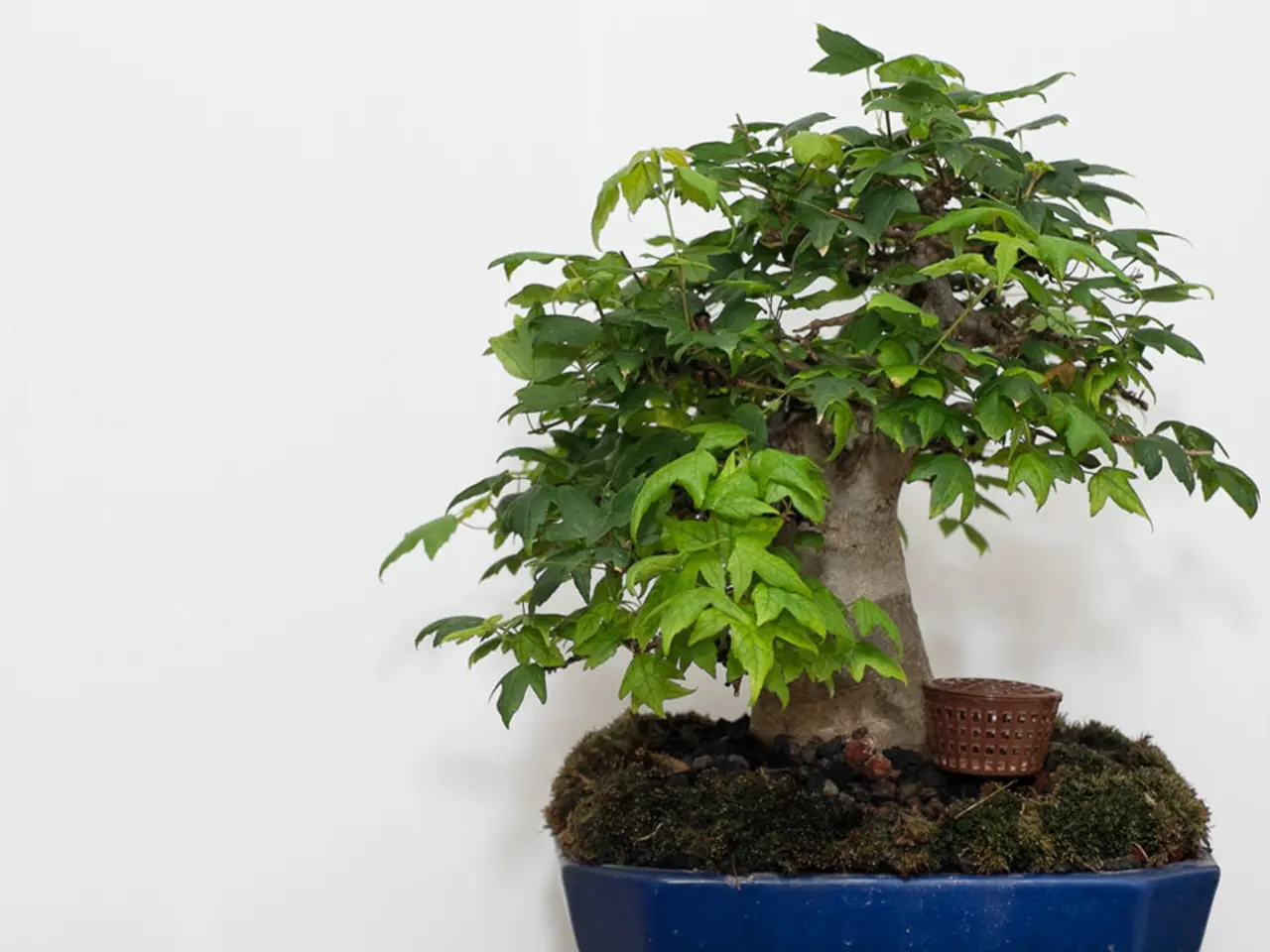Bonsai Dirt Composition: Crafting the Optimal Blend for Health and Prosperity
In the world of bonsai, creating a custom soil mix is essential for fostering healthy growth, vibrant colors, and robust root systems. By following best practices, bonsai enthusiasts can ensure a harmonious balance that caters to each tree species' unique needs.
The key elements in a bespoke bonsai soil mix include Akadama, a hard-baked Japanese clay renowned for its exceptional water-holding capacity, pumice, a volcanic rock that enhances drainage and aeration, and lava rock, which adds durability and promotes aeration without compacting.
A classic starting ratio is a 1:1:1 combination of akadama, pumice, and lava rock, sifted to uniform particle size for consistency. However, this ratio can be adjusted based on the tree species' requirements, such as using more akadama for moisture-loving species or more pumice and lava for drought-tolerant types.
In addition to these inert mineral components, organic components like composted bark and pine bark fines play a crucial role. These organic materials are rich in humic acids and nutrients, acting as a slow-release fertilizer, promoting microbial activity, and infusing the soil with beneficial microorganisms.
However, it's essential to use organic components sparingly, as they can reduce drainage and break down over time. To further boost drainage and aeration, especially for species that require drier root conditions, perlite or coarse sand can be added to the mix.
Tailoring the soil texture to the tree is also crucial. Young or tender species requiring moisture retention benefit from finer particles, while mature or desert-adapted species prefer coarser particles for faster drainage.
Incorporating nutrient boosters or enriched soil amendments can improve nutrient availability without compromising soil structure. Mimicking the tree's natural environment by adjusting the mix ingredients to replicate the soil where the species naturally grows can enhance health and growth stability.
It's important to note that only 20% of regular potting soils drain adequately, making them unsuitable for bonsai trees, which require swift water drainage to prevent root rot. Regular repotting is essential for bonsai health, as it replenishes soil nutrients and prevents root-bound conditions, with a general rule of repotting every 2-5 years depending on the species, growth rate, and pot size.
Different bonsai species exhibit unique soil preferences. Deciduous species thrive in well-draining soils with a slightly acidic pH, while evergreen species prefer more alkaline soils with better water retention. Tropical species require a more nutrient-rich soil with excellent aeration.
The ideal pH range for a bonsai soil mix is between 6.0 and 7.0, allowing for perfect nutrient availability and uptake, while accommodating the diverse pH tolerances of various bonsai species. Pine bark fines, comprising approximately 20-30% of a well-draining bonsai soil mix, play a pivotal role in maintaining ideal aeration and preventing waterlogging around the roots.
In regions characterized by high temperatures and low rainfall, bonsai soil must be formulated to conserve water and protect roots from desiccation, while in cooler, wetter climates, the emphasis shifts to ensuring adequate drainage and aeration to prevent waterlogged roots.
Yes, you can create a customized bonsai soil mix using local materials, carefully selecting and blending ingredients that provide ideal drainage, aeration, and nutrient retention, while catering to your specific bonsai species, climate, and watering needs. Composted bark can retain up to 20% of its weight in water, enhancing water-holding capacity, improving soil structure, allowing for better water penetration and aeration, and helping to buffer pH fluctuations.
In summary, crafting a custom bonsai soil mix involves balancing inert mineral components for drainage and aeration, with adequate moisture retention and nutritional amendments, tailored carefully to the species’ ecological preferences and growth stage. With the right blend, bonsai enthusiasts can nurture their trees to flourish, creating stunning, living works of art.
- Toenail the perfect balance in your home-and-garden, consider crafting a bespoke bonsai soil mix that also serves as a beautiful addition to your lifestyle.
- For a thriving garden and exceptional bonsai trees, recognize the necessity of tailoring soil mixes, while integrating home-and-garden practices that cater to each species' unique needs, such as gardening techniques based on the tree's natural environment and climate.




